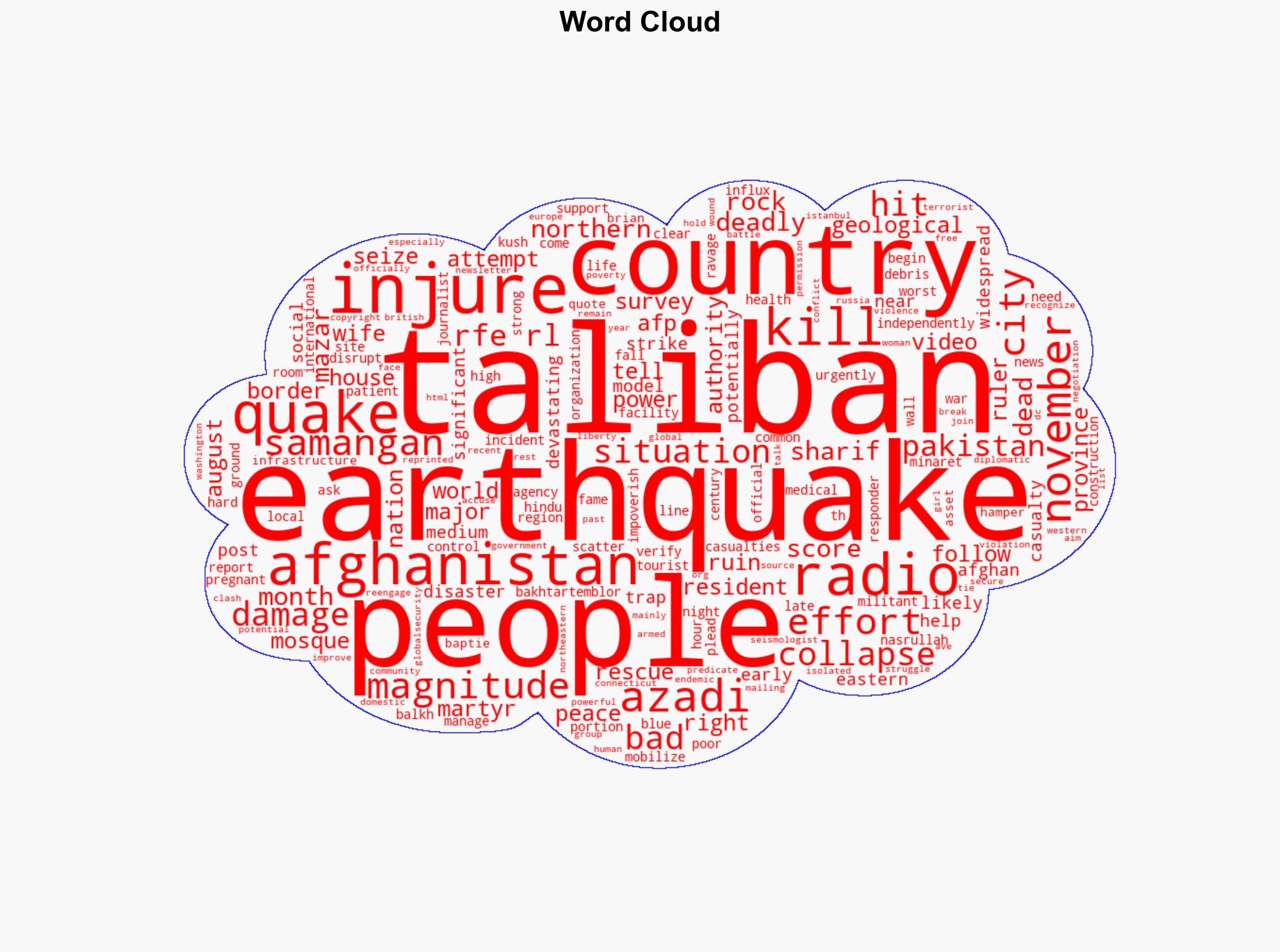At Least 27 Dead Scores Injured As Earthquake Rocks Northern Afghanistan – Globalsecurity.org
Published on: 2025-11-04
Intelligence Report: At Least 27 Dead Scores Injured As Earthquake Rocks Northern Afghanistan – Globalsecurity.org
1. BLUF (Bottom Line Up Front)
The earthquake in Northern Afghanistan has resulted in significant casualties and infrastructure damage, exacerbating the region’s humanitarian crisis. The most supported hypothesis is that the earthquake’s impact will further destabilize the region, complicating humanitarian efforts and international relations. Confidence level: Moderate. Recommended action: Immediate international humanitarian assistance and diplomatic engagement to facilitate aid delivery.
2. Competing Hypotheses
Hypothesis 1: The earthquake will significantly destabilize the region, leading to increased humanitarian needs and complicating international relations due to the Taliban’s current governance.
Hypothesis 2: The earthquake will have a limited long-term impact on regional stability, as local and international responses will effectively mitigate the immediate humanitarian crisis.
Using the Analysis of Competing Hypotheses (ACH) 2.0, Hypothesis 1 is better supported due to the existing infrastructure challenges and the Taliban’s limited international recognition, which may hinder effective aid distribution and recovery efforts.
3. Key Assumptions and Red Flags
Assumptions include the expectation that international aid will be forthcoming and that the Taliban will allow effective distribution. A red flag is the lack of verified information on the extent of the damage and the Taliban’s willingness to cooperate with international agencies. Blind spots include the potential for further seismic activity and the full extent of infrastructure damage.
4. Implications and Strategic Risks
The earthquake compounds existing vulnerabilities in Afghanistan, including poverty and political isolation. There is a risk of escalating humanitarian needs leading to increased migration pressures. Geopolitically, the situation may strain relations with neighboring countries if border tensions rise due to increased refugee flows. Economically, reconstruction demands may overwhelm local resources.
5. Recommendations and Outlook
- Immediate deployment of international humanitarian aid with a focus on medical and shelter needs.
- Engage diplomatically with the Taliban to ensure aid delivery and infrastructure rebuilding.
- Best-case scenario: Effective international response stabilizes the situation within months.
- Worst-case scenario: Continued instability leads to regional tensions and increased refugee flows.
- Most likely scenario: Prolonged recovery period with intermittent international engagement.
6. Key Individuals and Entities
Nasrullah, a resident of Samangan Province, provides firsthand accounts of the earthquake’s impact. The Taliban, as the governing entity, plays a crucial role in facilitating or hindering aid efforts.
7. Thematic Tags
national security threats, humanitarian crisis, regional stability, international aid, geopolitical dynamics





